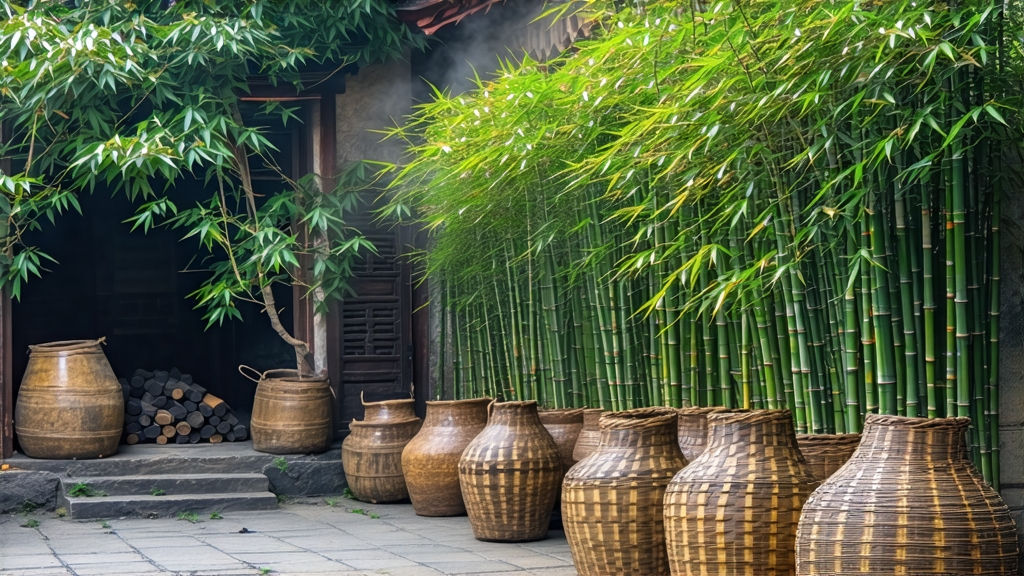
Tucked high in the mist-veiled Dabie Mountains of western Anhui province, Huoshan Huangya has quietly embodied the elegance of China’s least-understood tea category for more than fourteen centuries. While green teas grab the spotlight and pu-erhs fill auction catalogues, this yellow tea—once sealed in bamboo tubes and rushed by horseback to the Tang-dynasty court—remains a whispered legend even inside China. To encounter it is to taste a vanished imperial etiquette: the moment the pale-gold liquor touches the tongue, a soft, almost buttery aroma unfolds into apricot, orchid and a trace of alpine stone, leaving a cool, sugared finish that lingers like temple bells at dusk.
Historical whispers
Local gazetteers first record “Huoshan Yellow Sprout” in 645 CE, when Tang Emperor Taizong received eight liang of the tea as mountain tribute. During the Ming, imperial demand peaked; leaf so precious that county magistrates personally oversaw the picking of “one bud, one leaf just unfurling like sparrow’s tongue.” When the Qing court switched its allegiance to fragrant green teas, Huoshan Huangya retreated into monasteries and mountain villages, surviving only because Buddhist monks valued its gentle warmth for meditation. The 1950s saw state tea institutes revive the craft; today fewer than thirty households still master the authentic menhuang (“sealed yellowing”) technique, making each harvest a living time capsule.
Micro-terroir, macro-character
The core micro-region lies between 600–800 m on the northern slope of Huoshan’s Jinji Mountain. Granite soils, rich in potassium and fluorine, are drained by fast, cold streams that keep night temperatures 6 °C lower than the valley floor. The cultivar is a local seed-grown population dubbed “Jinji Large-Leaf,” whose thick cell walls translate into higher amino acids and a signature lactone precursor that releases the tea’s custard-like bouquet after yellowing. Spring fog filters sunlight to a soft, diffused glow, slowing photosynthesis and concentrating the sweet, bamboo-shoot note that connoisseurs call “mountain charm.”
Craft: the dance of killing green and coaxing yellow
Picking begins at dawn on Qingming festival when the bud is still shorter than 25 mm and sheathed in silvery down. Leaves are carried in bamboo sieves lined with fresh fern fronds to prevent bruising. The first critical step, shaqing (“killing green”), is done in a 160 °C iron wok, but the toss is lighter and shorter (90–120 s) than for green tea; enzymes must be only half denatured so that later micro-oxidation can proceed.
While still warm, the leaf is piled 4 cm deep inside bamboo trays and slipped into a pine-wood cabinet lined with wet cotton. This is menhuang, the sealed yellowing phase that gives the category its name. Over 48–72 h the internal temperature hovers at 28–30 °C; chlorophyll quietly degrades, polyphenols polymerize, and a faint maillard reaction paints the leaf a muted olive-gold. Every six hours the pile is gently turned by hand, the master judging readiness by aroma alone: when the green grassiness has receded and a scent of steamed corn and orchid arises, the leaf is swiftly removed.
A unique charcoal firing follows. The tea is spread on hemp cloth stretched over a bamboo basket suspended 60 cm above embers of local chestnut wood. The fireman fans the embers so that heat kisses but never scorches; leaf moisture drops from 15 % to 5 % in three passes, each followed by a 30-minute rest to homogenize moisture. The finished maocha appears slim, straight and canary-yellow at the tip, with tiny amber spots—“golden caviar,” locals joke.
Grades & styles
Huoshan Huangya is sorted into four ascending grades: Special Sprout, First Sprout, Second Sprout and Yellow Slice. Special Sprout comprises only the unopened bud, downy and ivory; it yields the most ethereal liquor. First Sprout allows one leaf still folded under the bud, giving a slightly grassier edge prized by Anhui chefs for pairing with river fish. Second Sprout, two leaves and a bud, is the workhorse grade, still aromatic but affordable for daily drinking. Yellow Slice, the broken leaf